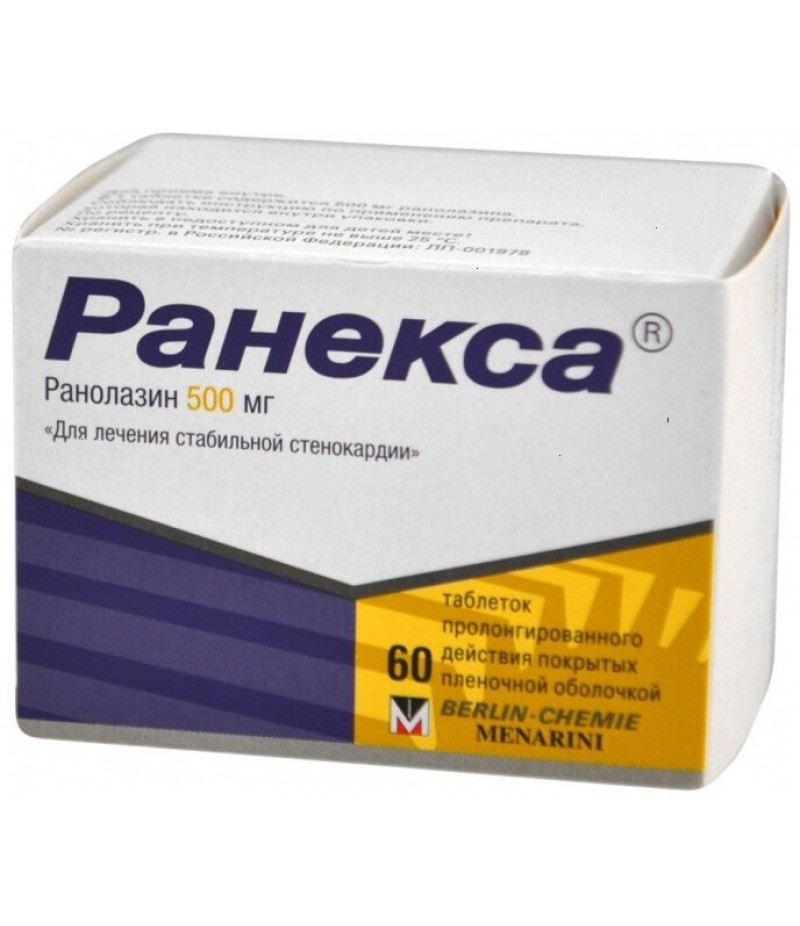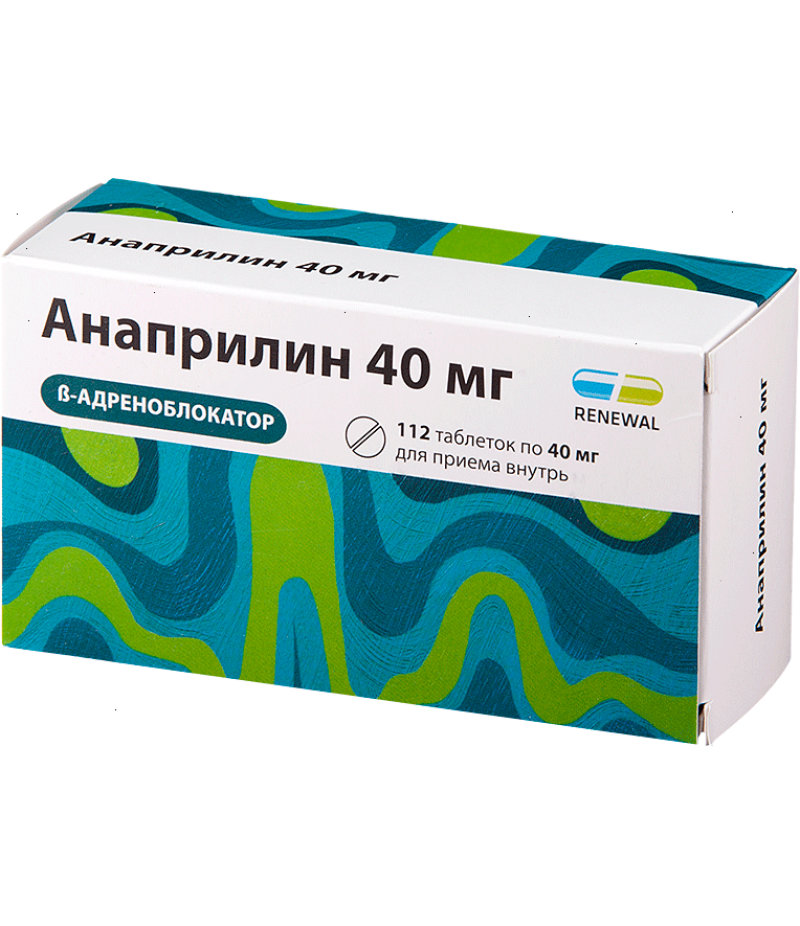Ranexa tabs 500mg #60
- $96.78
- 2 or more $95.99
- 3 or more $95.48
- Availability:In Stock
Instruction for RanexaTo buy Ranexa online just add it to your shopping cartCompositionIn 1 tablet of ranolazine 500 or 1000 mg and excipients.Form of issueTablets of prolonged action in the film coat 500 mg and 1000 mg.pharmachol..
Tags: tabs
Instruction for Ranexa
To buy Ranexa online just add it to your shopping cart
Composition
In 1 tablet of ranolazine 500 or 1000 mg and excipients.
Form of issue
Tablets of prolonged action in the film coat 500 mg and 1000 mg.
pharmachologic effect
Antianginal.
Pharmacodynamics and pharmacokinetics
Pharmacodynamics
Effective antianginal and anti-ischemic agent, reliably reduces the number of attacks of angina pectoris. The mechanism of action is unique, which distinguishes this drug from other antianginal agents. Under conditions of ischemia, there is an overload of muscle cells of the heart with calcium ions, which disturbs the relaxation of the myocardium in diastole and reduces the filling of the coronary arteries, causing attacks of angina pectoris. Ranolasin inhibits the late current of sodium ions into cardiomyocytes, and a decrease in intracellular sodium results in a decrease in intracellular calcium. Reduction of excess calcium inside the cell leads to a relaxation of the myocardium, a decrease in the diastolic stress of the ventricles, an improvement in coronary blood flow in general and in the ischemic zone, in particular. Thus, the vicious cycle of ischemia is broken.
In the treatment of the development of tolerance does not occur, and after a sharp cancellation the frequency of attacks does not increase. Significantly improved tolerability of loads in patients. There is a clear dose-effect relationship: the higher the dose, the higher the antianginal effect. The ECG showed an elongation of the QTc interval, a decrease in the height of the T wave, a decrease in the incidence of arrhythmias. With all these effects, there is a slight decrease in heart rate and a decrease in systolic blood pressure.
Pharmacokinetics
When administered orally, Cmax in the blood is determined after 2 to 6 hours. Equilibrium concentration is achieved in 3 days of taking the drug 2 times a day. Bioavailability is 35-50%. About 63% of the active substance binds to blood proteins. It is metabolized in the liver with the participation of isoenzymes CYP3A4 and CYP2D6. It is excreted by the kidneys and through the intestine. The period is about 7 hours. With CHF, there is an increase in concentration of 1.3 times. In elderly people, the effect of the drug may be increased. In renal insufficiency, AUC of ranolazine is 1.7-2 times higher than in healthy ones.
Indications for use
Treatment of stable angina pectoris.
Contraindications
renal failure of moderate to severe severity;
use with itraconazole, posaconazole, ketoconazole, clarithromycin, nefazodone, telithromycin, which are potent inhibitors of the CYP3A4 enzyme;
use with antiarrhythmic drugs of Class I A and III;
age to 18 years;
lactation;
pregnancy;
hereditary lactose intolerance;
hypersensitivity.
With caution, Ranexa is used in people over 75 years of age, with weight less than 60 kg, with QT interval prolongation, III-IV functional class CHF, with simultaneous application with diltiazem, erythromycin, fluconazole, rifampicin, phenobarbital, phenytoin, carbamazepine and St. John's wort preparations. , isoenzyme deficiency of CYP2D6.
Side effects
Common side effects:
dizziness, headache;
constipation, nausea, vomiting;
asthenia.
Infrequent and rare side effects:
decreased or no appetite, dehydration;
abdominal pain, flatulence, dryness of the oral mucosa, pain in the stomach, erosive duodenitis;
insomnia, anxiety, hallucinations;
retardation, drowsiness, fainting, tremor;
amnesia, disorders of coordination and gait, loss of consciousness, change in smell;
blurred vision, various visual disorders;
vertigo, tinnitus, hearing loss;
marked decrease in blood pressure, cold extremities;
shortness of breath, cough;
skin itching, rash, hives, allergic dermatitis;
pain in the limbs, weakness in the muscles and spasms, swelling of the joints;
dysuria, urinary retention, hematuria;
peripheral edema;
an increase in the activity of "hepatic" transstaminases, the concentration of creatinine and urea.
Ranexa, instructions for use (Method and dosage)
Before you buy Ranexa you should reed the instruction.
Ranexa tablets are taken orally regardless of the meal. Tablets should not be chewed, crushed or broken. The initial dose of Ranexa 500 mg 2 times a day. If necessary, after 2 weeks, the dose increases to 1000 mg twice a day, which is the MS dose.
When there is dizziness or nausea, the dose again decreases to 500 mg. The drug is discontinued if side effects do not disappear.
Patients with CHF III-IV FC, renal and hepatic insufficiency, those over 75 and weighing less than 50 kg undergo a careful dose selection.
Overdose
Overdosing manifests itself in dizziness, nausea, double vision, inhibition, fainting. Symptoms increase with increasing dose. Gastric lavage, the use of sorbents, symptomatic therapy.
Interaction
The use of inhibitors of the isoenzyme CYP3A4 significantly increases the concentration of ranolazine, which entails an increase in dose-dependent adverse reactions; therefore, the appointment concurrently with the potent inhibitors of the isoenzyme mentioned above is contraindicated. It must be remembered that grapefruit juice is a potent inhibitor of the isoenzyme CYP3A4.
Medium-strength isozyme inhibitors (diltiazem, erythromycin, fluconazole) cause an increase in the Css value of the drug 1.5-2.5 times, so a reduction in the Ranexa dose is necessary. Inductors of isoenzyme activity, on the contrary, lead to a decrease in efficiency.
The dose of the drug is reduced when used with Ciclosporin and Verapamil, which increase its concentration in the blood.
Since ranolazine is a weak inhibitor of the isoenzyme CYP2D6, its administration increases the concentration and enhances the action of metoprolol, propafenone, flecainide, tricyclic antidepressants and neuroleptics.
When used with digoxin, its concentration is increased 1.5 times.
Receiving ranolazina in high doses increases the concentration of simvastatin. The cases of rhabdomyolysis with the use of these drugs have been reported. Lovastatin also requires a dose restriction.
Ranolasin causes an increase in the concentration in the blood of tacrolimus, sirolimus, cyclosporine, everolimus.
Medicinal products that extend the QT interval and are used concomitantly with ranolazine (terfenadine, misolastine, astemizole, quinidine, procainamide, disopyramide, imipramine, amitriptyline, doxepin) cause the risk of ventricular arrhythmias.
Storage conditions
Storage temperature up to 25 ° C.
Shelf life - 4 years.
Ranexa Reviews
Ranolazin is used in combined treatment of IHD patients and has an additional anti-ischemic and antianginal effect. Thus, a decrease in the frequency of seizures, an increase in the duration of exercise with 1000 mg of Ranexa per day in patients who took only amlodipine. As a result of treatment, the dose of amlodipine was reduced. Similarly, patients noted a decrease in the frequency of seizures and a decrease in the dose of nitroglycerin after taking this drug for 6 weeks. In some patients, on the background of treatment, attacks of ventricular and supraventricular tachycardia decreased.
Ranolazine had no significant effect on heart rate and blood pressure and did not cause significant side effects if applied alone as monotherapy. And at appointment together with β-adrenoblokatorami or BKK the unexpressed headaches and giddinesses, delicacy were observed.



